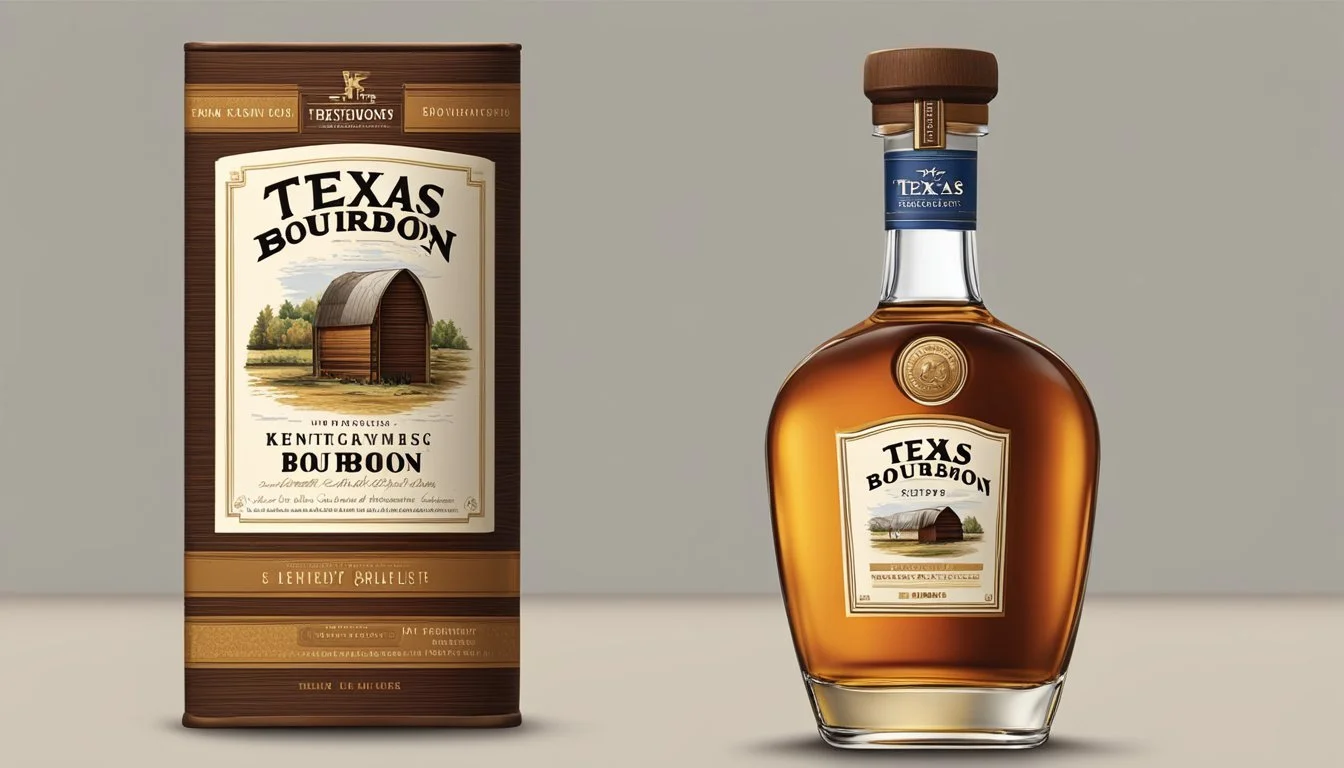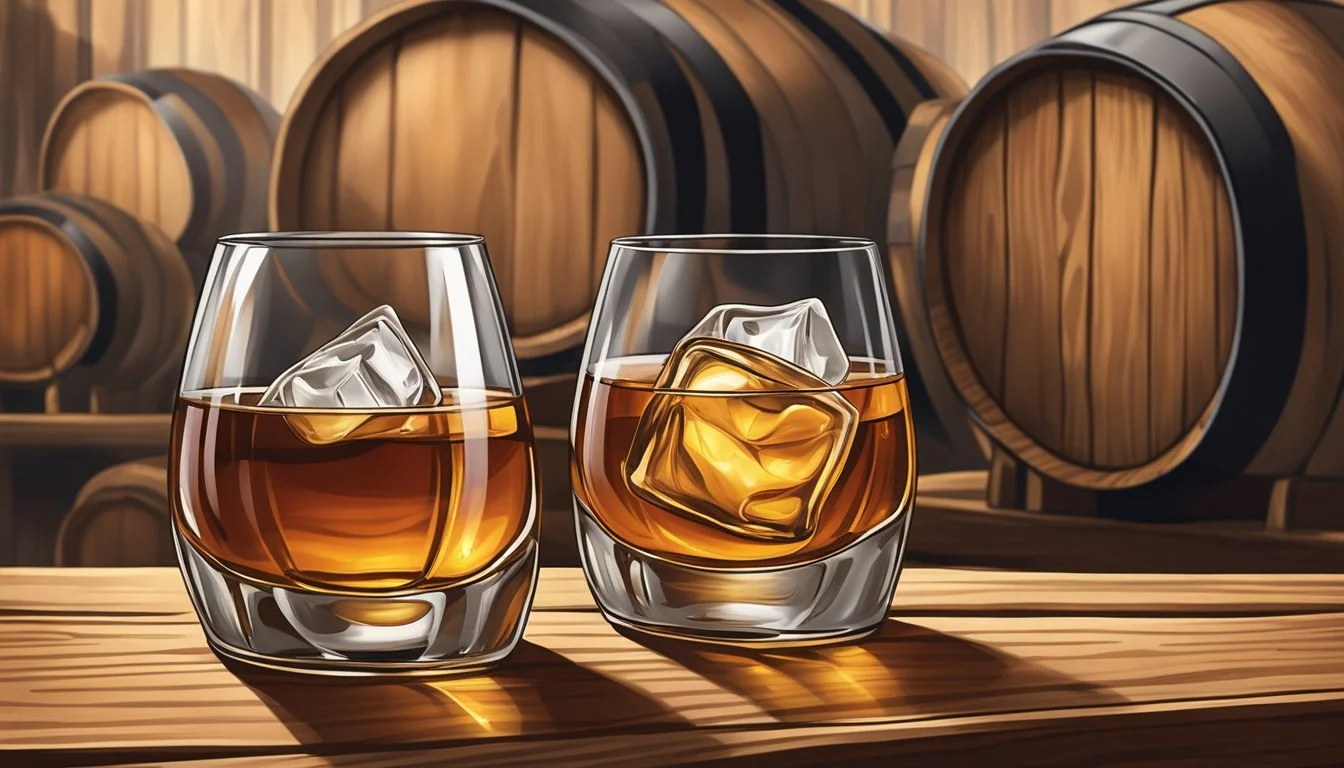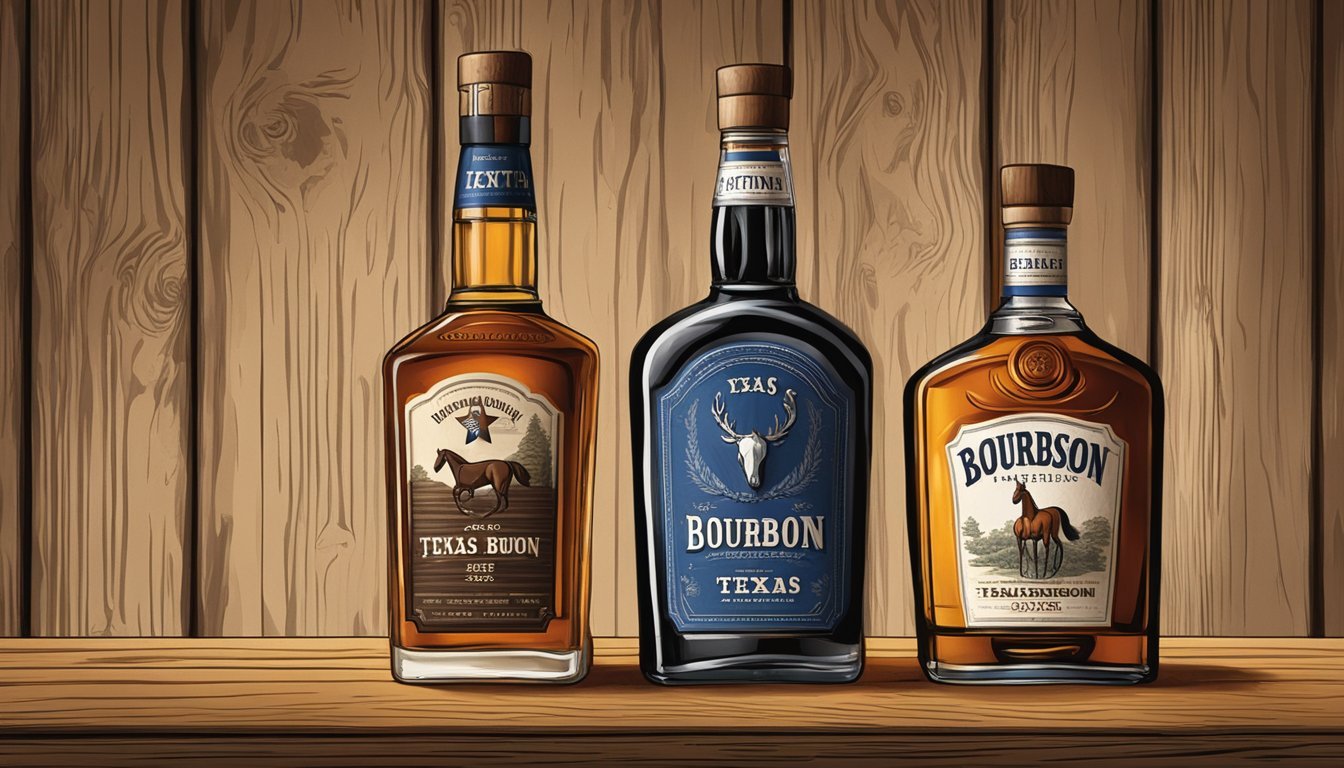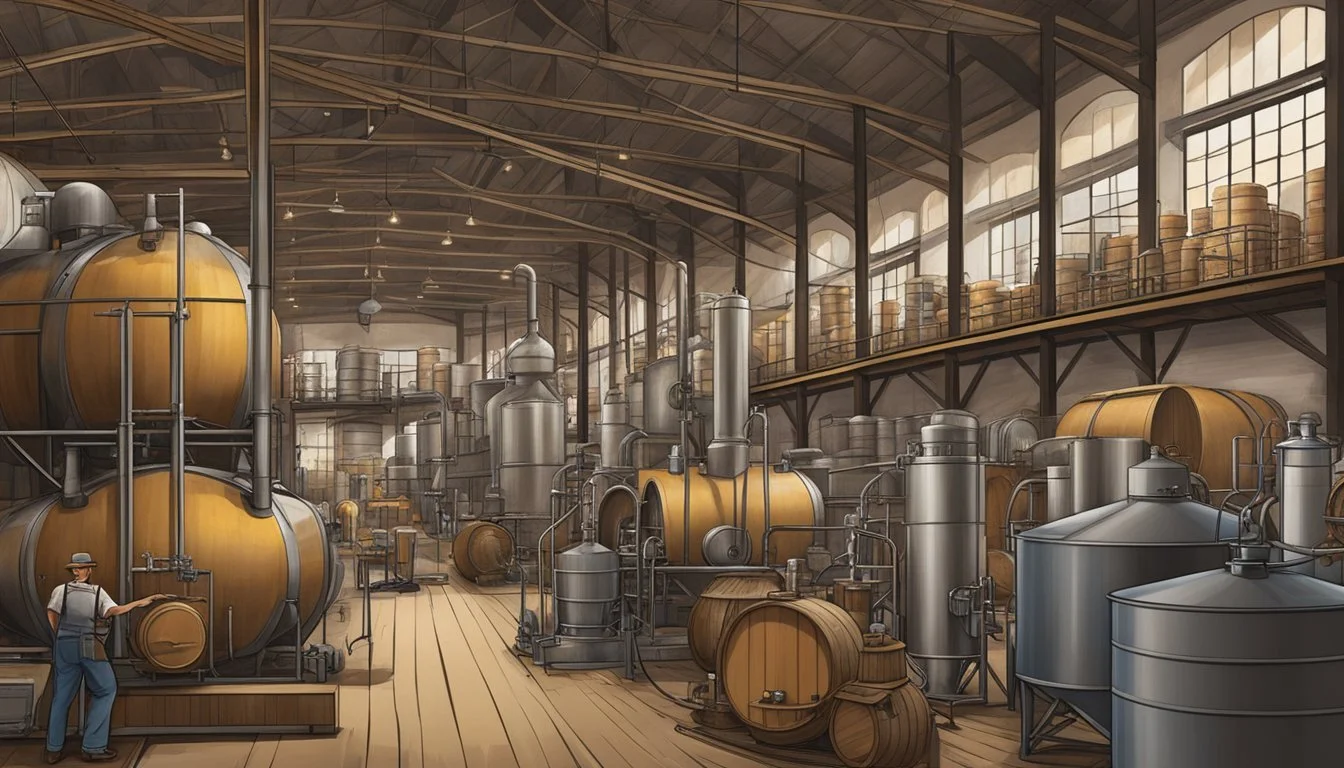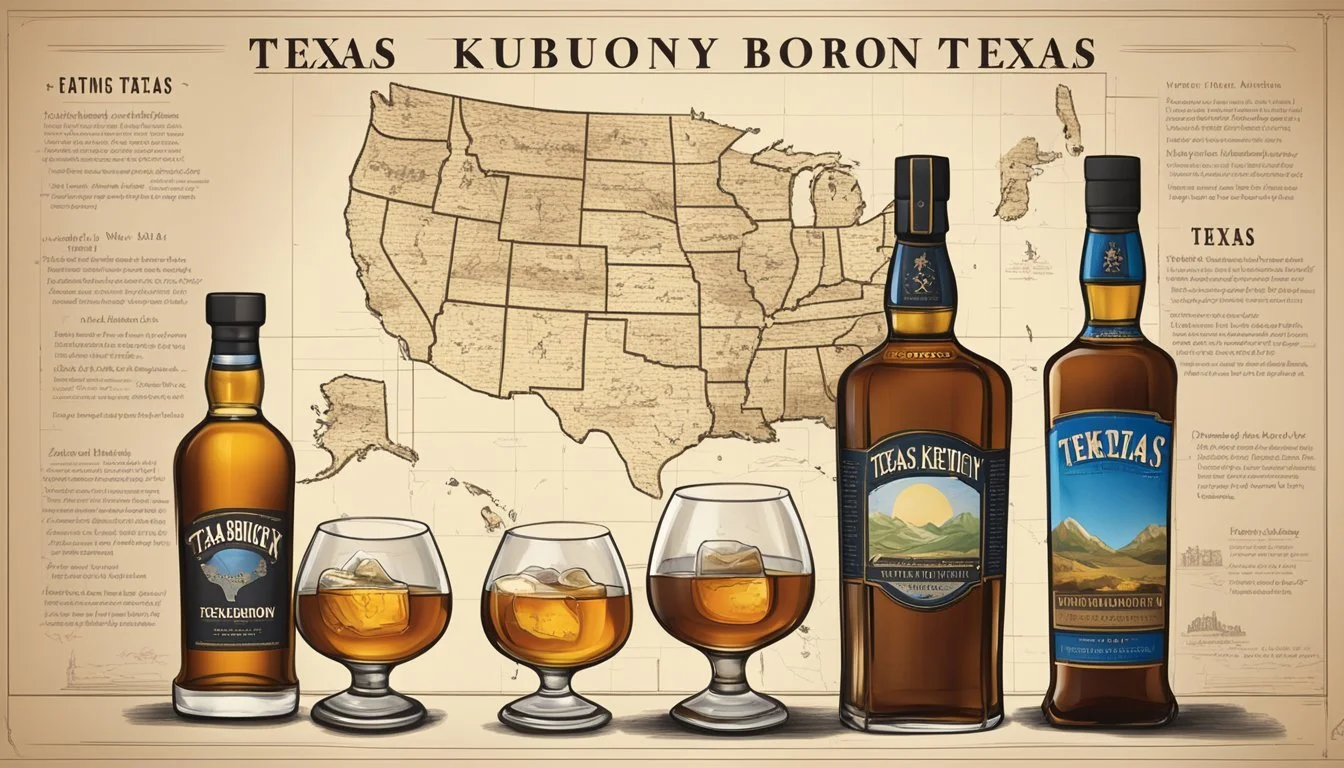Texas Bourbon vs. Kentucky Bourbon
Understanding Region Influence on Taste
Bourbon, an American whiskey largely associated with Kentucky, has long held a prestigious place in the spirits world, synonymous with tradition and quality. However, recent years have seen an upstart rival emerge from Texas, challenging preconceived notions about what makes a premium bourbon. While Kentucky's climate provides a consistent aging process for its bourbons, leading to a smooth and complex flavor profile, Texas's hotter environment accelerates the aging process, which can imbue the spirit with bold, intense flavors.
This variance in climate between Texas and Kentucky contributes to a notable difference in the maturation of bourbon. Kentucky's relatively stable temperatures foster a gradual interaction between the wood and the spirit, while the significant temperature swings in Texas cause the bourbon to expand and contract within the barrel more dramatically, increasing the rate of aging. This can result in Texas bourbon reaching maturity faster, though often at the cost of a higher 'angel’s share'—the portion of whiskey lost to evaporation.
Despite its deep-rooted association with Kentucky, bourbon production is not confined to any single state—provided it adheres to the requisite regulations that define American bourbon. This includes being made from a grain mixture that is at least 51% corn, aged in new, charred oak barrels, distilled to no more than 160 proof, and bottled at 80 proof or more. Both Kentucky and Texas meet these criteria, yet they each offer distinct takes on this classic American spirit, reflecting their diverse heritage and environments.
History and Origin of Bourbon
Bourbon's evolution is deeply rooted in American history, with Kentucky at its heart and Texas emerging as a significant player.
Kentucky Bourbon Traditions
Kentucky's relationship with bourbon began in the late 1700s as settlers from Scotland, Ireland, and other European countries arrived with their distilling traditions. Kentucky bourbon is distinguished by its unique crafting process and adherence to strict guidelines: it must be made from at least 51% corn, aged in new charred oak barrels, and distilled to no more than 160 proof. The state's naturally filtered, iron-free water and seasonal temperature variations are ideal for the aging process, contributing to the whiskey's signature flavor.
As it stands, Kentucky produces approximately 95% of the world's bourbon, solidifying its reputation as the bourbon capital. Historical distilleries such as the Buffalo Trace Distillery in Frankfurt, Kentucky, which trace their beginnings back to 1787, are testament to the long-standing tradition of bourbon distillation in the state.
Rise of Texas Bourbon
In contrast, Texas bourbon is a newer phenomenon, reflecting a broader trend of bourbon production across various American states. Despite a shorter history, Texas distilleries have adopted innovative approaches to their bourbon, taking advantage of the state's diverse climates to influence the aging process. Texas's fluctuating temperatures can intensify the interaction between the whiskey and the barrel, potentially accelerating the maturation rate when compared to Kentucky's more consistent aging environment.
Texas distillers also use local ingredients, such as Texas corn and indigenous oak species for barrels, adding unique regional characteristics to their bourbon. Although they produce a much smaller volume compared to Kentucky, Texas distilleries are gaining recognition for their high-quality, distinctive American bourbon.
Defining Characteristics of Bourbon
In exploring the key elements that make bourbon a distinct whiskey, one must consider the strict legal standards, the primary role of corn, and the influence of oak barrels through aging.
Legal Requirements for Bourbon
Bourbon's identity is protected by stringent legal criteria that are essential to its classification. These requirements include:
Composition: The mash bill must contain at least 51% corn.
Production: It must be distilled to no more than 160 proof (80% alcohol by volume) and entered into the barrel for aging at no more than 125 proof (62.5% alcohol by volume).
Aging: Bourbon must be aged in new, charred oak barrels. There is no minimum aging period for bourbon, but to be labeled as straight bourbon, it must be aged for at least two years.
Geography: It can be produced anywhere in the United States, not just Kentucky.
Additives: No additives are allowed other than water to reduce proof where necessary.
The Role of Corn in Bourbon
Corn is the cornerstone grain of bourbon, providing a distinctive sweetness and full-bodied flavor profile. The high percentage of corn in bourbon's mash bill results in its signature notes of vanilla, caramel, and toffee. Typically, bourbons exhibit a mash bill close to 70% corn, although some brands might opt for an even higher corn content to achieve a sweeter, mellower taste.
Impact of Aging and Oak Barrels
The aging process in new, charred oak barrels is instrumental in defining bourbon's character. Through aging, bourbon acquires a richness and complexity accompanied by an amber hue. Notable flavors like vanilla, oak, spice, and hints of smoke are imparted by the charred wood. Moreover, the variability of climates, such as that in Texas, can accelerate the aging process, resulting in a more intense evaporation rate known as the "angel's share." This can profoundly influence the bourbon's final flavor and volume, demonstrating a contrast to the typically more controlled climate of Kentucky aging warehouses.
Distillation and Aging Process
In the world of American whiskeys, the distillation and aging processes are crucial for defining the character and flavor of bourbon. Kentucky and Texas bourbons, while sharing a common heritage, have distinct approaches in these stages due to regional influences.
Traditional Bourbon Distilleries
Kentucky distilleries adhere to a deep-seated tradition in the bourbon-making process. They employ a continuous still, also known as a column still, that enables a steady distillation process, key to achieving the consistent flavor associated with renowned Kentucky brands. The spirit then undergoes aging in charred new oak barrels, a legal requirement that imparts complex flavors ranging from caramel and vanilla to spicy undertones.
Garrison Brothers and Balcones, two trailblazing Texas whiskey distilleries, build on the standard set by Kentucky. However, they introduce innovative practices reflective of the bold Texas spirit. Texas distilleries often use varied barrel sizes, which impacts the rate of aging due to the increased contact area between the whiskey and the wood. They also experiment with different char levels of the oak barrels, influencing the intensity of the smoky, caramelized flavors in the finished product.
These innovative practices stem from Texas's less prescriptive regulations compared to Kentucky, allowing for a broader experimentation in the bourbon-making process. This has led to Texas bourbons with distinctive profiles that are gaining prominence in the whiskey market.
Tasting Notes and Flavor Profiles
When savoring bourbon, connoisseurs discern a dance of aromas and flavors developed from the grain, the fermenting process, and the aging barrel. Each bourbon tells a story of its origin, be it the limestone-filtered springs of Kentucky or the variable Texan climate, influencing the final symphony of tastes.
Identifying Aromas and Palettes
Upon the initial encounter with bourbon, the nose is greeted by a tapestry of scents. Vanilla and caramel are not accidental; they are the offspring of charred oak barrels, intertwined with the soul of the drink. The grains, chiefly corn, contribute sweetness, while aging imparts depth with possible hints of chocolate or pecan, though these notes can be as varied as the bourbons themselves. Decoding these scents forms the prelude to tasting, where the full-bodied experience of bourbon unfolds on the palate.
Primary Flavor Notes:
Sweetness: Derived from corn
Spices: Originating from the barrel’s char
Fruitiness: A result of fermentation and yeast
Comparing Kentucky and Texas Bourbon
Kentucky Bourbon: The gold standard for many, its flavors are often smooth, with a balance struck through traditional methods and consistent climates. Kentucky's long history with bourbon grants it a reputation for rich notes of caramel and a smooth vanilla finish that aficionados seek out.
Kentucky Bourbon
Balanced profile
Prominent vanilla and caramel
Texas Bourbon, on the other hand, experiences greater climate extremes, affecting distillation and aging. These bourbons can be bolder, with the heat intensifying the infusion of oak, sometimes introducing a robustness akin to pecan or deep chocolate undertones.
Texas Bourbon
Bold profile
Enhanced oak influence
Each state’s bourbon bears the unique thumbprint of its surroundings, offering distinct experiences for the palate – an exploration of the United States, one sip at a time.
Iconic Bourbon Brands
In the world of bourbon, certain names stand out for their history, production quality, and flavor profiles. Kentucky and Texas both offer unique bourbon experiences shaped by tradition and regional influences.
Kentucky's Renowned Labels
Buffalo Trace: Established in 1773, Buffalo Trace Distillery is one of the United States' oldest distilleries with a robust lineage. Its bourbons, recognized by over 200 awards, maintain a steadfast presence in the bourbon industry.
Evan Williams: As a staple in Kentucky bourbon, Evan Williams offers a wide range of expressions and is known for producing smooth and approachable bourbon at reasonable prices.
Texas's Standout Bourbon Makers
Garrison Brothers Balmorhea: This Texas distillery has made a name for itself with its Balmorhea bourbon, twice barreled for a complex and deep flavor that pays homage to the local heritage.
Yellow Rose: A Houston-based craft distillery, Yellow Rose is known for its innovation in the bourbon scene, producing small-scale, high-quality products that reflect Texas' independent spirit.
Texas Blue Corn Bourbon: Distilled from blue corn, this unique bourbon variant brings a distinctive Texan twist to the classic American spirit, offering a richer, sweeter profile.
Bourbon in Popular Culture
Bourbon has not only made its mark on the beverage industry but also permeates popular culture, finding prominence in cocktails and recipes, while its influence stretches far beyond Kentucky, illustrating its wide-reaching cultural impact.
Bourbon's Role in Cocktails and Recipes
Bourbon, known for its rich and versatile flavor profile, is a staple ingredient in many classic cocktails. The Mint Julep is perhaps the most iconic, traditionally associated with the Kentucky Derby. The simplicity of bourbon, mint, sugar, and ice makes it a beloved staple. Beyond the racetrack, bourbon is a key component in other mixological staples such as the Old Fashioned and the Manhattan, both leaning on bourbon's complexity to balance sweetness and bitters.
Culinary enthusiasts embrace bourbon for its depth of flavor in recipes, from savory glazes for meats to rich, indulgent desserts. Its caramel and vanilla notes work well in confectioneries and baked goods, elevating traditional recipes with a touch of Southern flair.
Bourbon's Influence Beyond Kentucky
While Kentucky is synonymous with bourbon, the spirit's popularity has urged other states to produce noteworthy non-Kentucky bourbon. Texas, for instance, has emerged with its unique take on bourbon. The state's fluctuating temperatures foster a distinctive aging process, contributing to a bold flavor profile that distinguishes it from its Kentucky counterpart.
This non-Kentucky bourbon has worked its way into popular culture, with brands like Pappy Van Winkle becoming a coveted item despite its Kentucky origins, illustrating the nationwide bourbon enthusiasm. The expanding bourbon culture encourages a growing appreciation for variations in production methods and regional characteristics, proving that bourbon's cultural footprint is not confined within the borders of its origin state.
The Economic Impact of Bourbon Production
Bourbon production significantly contributes to local economies, particularly within the sectors of tourism, job creation, and exports. In Kentucky, the industry is a historical heavyweight, while in Texas, a burgeoning industry is carving out its own economic niche.
Kentucky's Bourbon Tourism and Export
Kentucky's bourbon industry has long been a central pillar of its economy, with the state's distilleries drawing tourists from around the globe. Bourbon-related tourism leads to substantial revenue through distillery tours, tasting events, and the Kentucky Bourbon Festival. In 2024, the Kentucky bourbon sector directly supported 23,100 jobs with salaries totaling $1.63 billion. Kentucky's distilleries have an exports value that reflects the global demand for this American spirit, reinforcing its economic importance.
Jobs Created: 23,100
Annual Salaries: $1.63 billion
Average Pay per Job in Kentucky Distilling (2022): $94,000
The presence of high-paying jobs is particularly notable in the state, with an average pay that is significantly higher than the national average. As a result, Kentucky's share of distilling payroll is greater than the national figure.
Growth of the Texas Bourbon Industry
The Texas whiskey industry, while smaller in scale compared to Kentucky's, is experiencing a notable expansion. The Texas Whiskey Association promotes and supports the state's whiskey producers, helping to foster a united industry identity. Texas bourbon has experienced growth both in production rates and in the establishment of new distilleries. The state's industry is not only adding a new dynamic to the American whiskey market but also providing an economic boost through job creation and increasing interest in whiskey tourism.
Key Entity Providing Support: Texas Whiskey Association
Main Economic Contributions: Job creation, whiskey tourism
As the Texas bourbon industry grows, so does its potential to become a significant player alongside Kentucky in the wider economic landscape of bourbon production in the United States.
Bourbon Collecting and Connoisseurship
In the bourgeoning marketplace of bourbon, enthusiasts champion the rare and aged varieties as well as small-batch, craft offerings. Collectors and connoisseurs alike seek out distinctive bottles from both Texas and Kentucky, looking for unique tasting experiences and investment potential.
The Market for Rare and Aged Bourbons
The bourbon secondary market thrives on the desire for rare and aged bourbon bottles. Kentucky Bourbon, with its deep historical roots, often commands high prices for well-aged expressions, including coveted single barrel and small batch releases. Collectors prize bottles that offer a glimpse into the past and view them as valuable assets, trading them at auctions and collectible markets. Conversely, Texas Bourbon has carved out its own niche, where limited releases from upstart distilleries fetch competitive prices, capitalizing on the 'cowboy' allure and bold flavors associated with the state's terroir.
Kentucky Bourbon Examples: Pappy Van Winkle's Family Reserve (15, 20, 23 years)
Texas Bourbon Examples: Balcones "1" Texas Single Malt, Garrison Brothers Cowboy Bourbon
Appreciating Craft Bourbon Varieties
As bourbon connoisseurship evolves, enthusiasts are drawn towards craft bourbon varieties that showcase innovative distilling methods and regional character. Texas distilleries, many of which are smaller in scale but rich in innovation, are gaining recognition for their unique approaches to maturation and flavor. The state's variable climate accelerates aging, contributing to a bolder taste profile even in younger bourbons. Craft offerings often spotlight cask strength options, delivering bourbon in its purest form that appeals to connoisseurs seeking an unadulterated tasting experience.
Craft Distilleries to Watch:
Kentucky: Willett Distillery, Michter's
Texas: Treaty Oak Distilling, Ironroot Republic
Collectors and connoisseurs enjoy the challenge of seeking out these craft bourbons, as each bottle encapsulates the essence of its origin, be it the tried and true lineage of Kentucky or the bold pioneering spirit of Texas.
The Future of Bourbon
As bourbon aficionados look forward to the ongoing evolution of the spirit, two critical areas stand out: innovation in production methods and the burgeoning landscape of distilleries shaping market trends.
Innovation and Sustainability in Production
Texas has made a significant impact on the future of bourbon with its dedication to local ingredients, specifically Texas-grown grains that impart a unique terroir to the bourbon. This has fostered a movement towards sustainability and innovation in production. Craft distilleries in Texas, like Ranger Creek, utilize local resources and innovative techniques to create bourbons that reflect the character of their region.
Local Grains: Texas distilleries often use grains grown in the state's diverse climates, affecting flavor profiles.
Sustainable Practices: There's a growing emphasis on reducing waste and energy consumption during distillation.
Emerging Distilleries and Market Trends
The growth of craft distilleries has been instrumental in diversifying the bourbon market with new flavors and styles. Ranger Creek and its peers are exploring bold approaches to aging, fermentation, and flavoring, creating a dynamic future landscape for bourbon enthusiasts.
Market Expansion: New entrants are broadening the scope of bourbon, challenging the dominance of traditional states like Kentucky.
Consumer Preferences: There's an increasing demand for locally sourced and innovatively produced spirits, which craft distilleries are well-positioned to meet.



